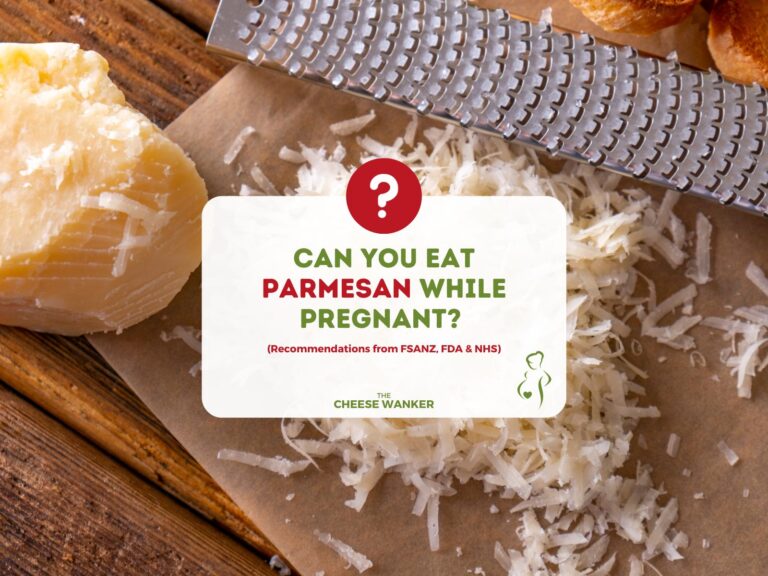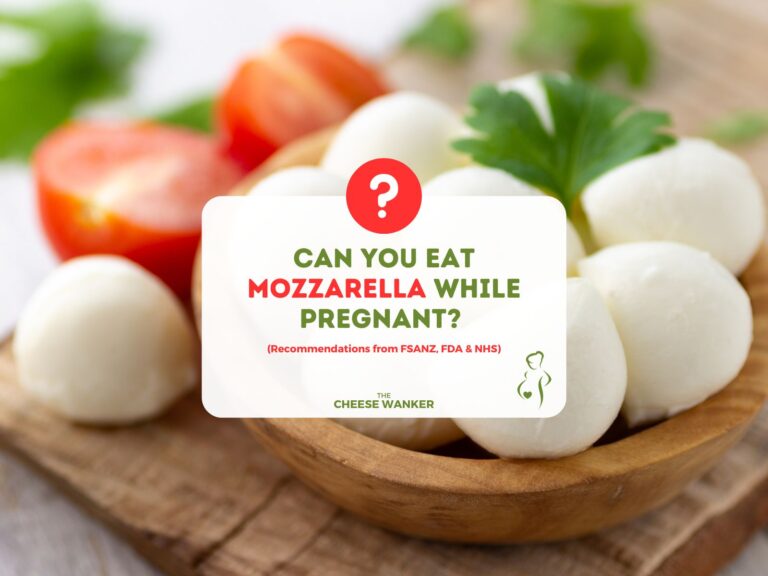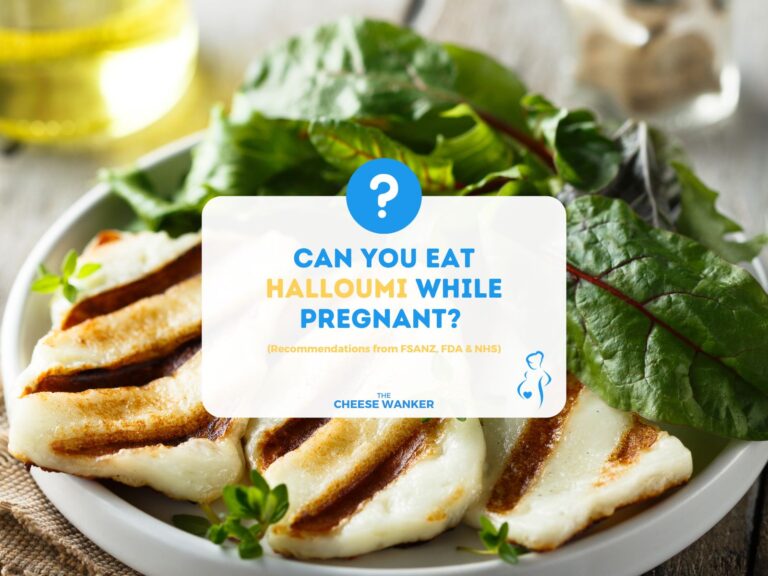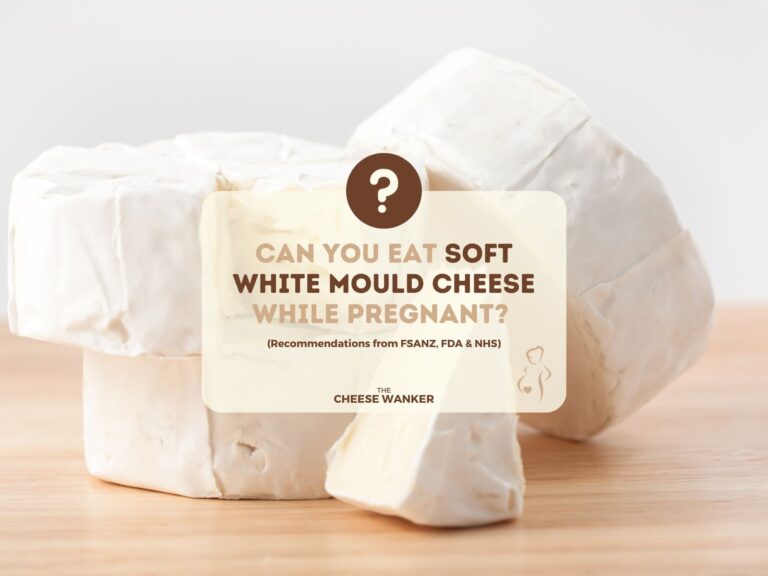Blue cheese is a delicacy appreciated for its rich flavour and unique texture. However, for expectant mothers, the question of its safety during pregnancy looms large. In this article, we delve into the scientific aspects of blue cheese consumption during pregnancy, shedding light on the risks associated and providing essential guidelines for safe consumption.
SEE ALSO: Our complete guide to which cheeses you can eat during pregnancy →
What is blue cheese?
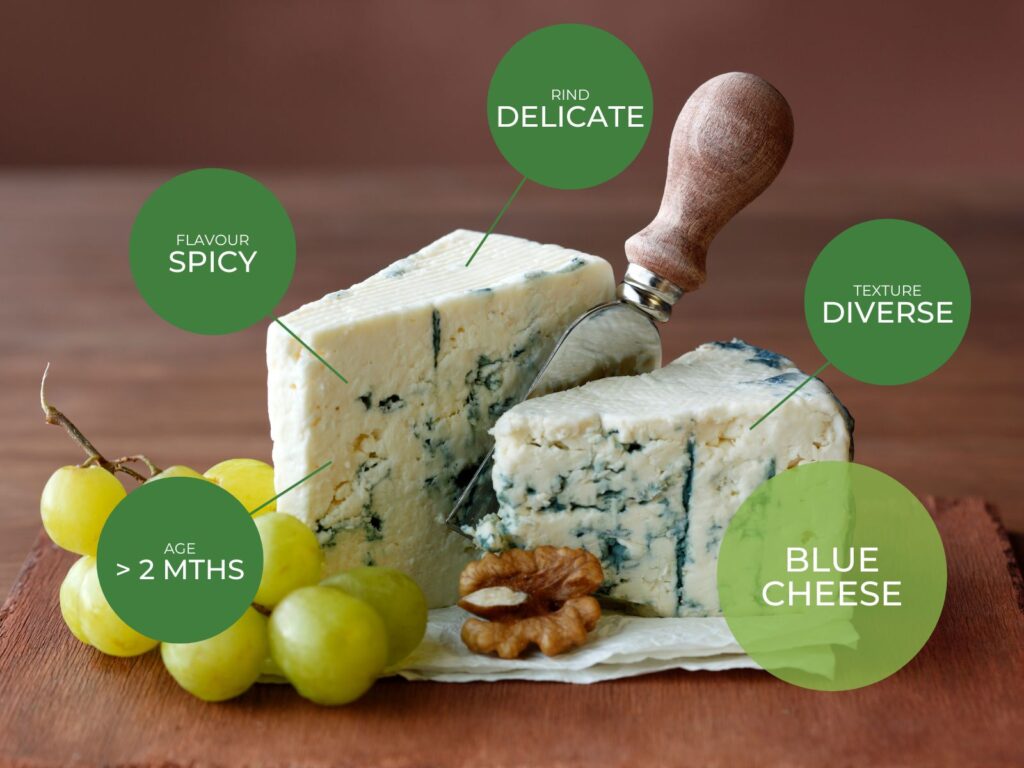
Blue cheese is renowned for its marbled appearance and bold flavour. Originating from various regions, including France, Italy and England, each type of blue cheese carries a unique tradition and craftsmanship.
What distinguishes blue cheese is the deliberate introduction of Penicillium mould, creating its characteristic blue or green veins. This mould not only contributes to its distinctive appearance but also enhances its flavour profile. The cheese’s taste ranges from mildly savoury to intensely pungent. Moreover, they often have a creamy, crumbly texture that is a result of the mould breaking down fats and proteins.
This combination of flavours and textures allows for a versatile culinary experience. As a result, blue cheese is a favourite ingredient in salads, sauces, burgers and desserts.
Blue cheeses from around the world are a testament to diverse culinary traditions, each offering a unique flavour profile shaped by regional craftsmanship. France’s Roquefort, Italy’s Gorgonzola, England’s Stilton, Spain’s Cabrales and the USA’s Rogue River Blue exemplify the richness of global blue cheese varieties.
Risks associated with blue cheese during pregnancy
Pregnancy is a time when expectant mothers meticulously consider every aspect of their diet to ensure the well-being of both themselves and their developing baby. While many foods are safe and nutritious, some, like blue cheese, pose specific risks during pregnancy.
The primary concern with blue cheese, as with other high moisture cheeses, revolves around the potential presence of Listeria monocytogenes, a bacterium that can lead to listeriosis.
What is Listeriosis?
Listeria monocytogenes, a bacterium found in contaminated food and soil, poses a significant risk, especially to pregnant women. Unlike many other bacteria, Listeria can thrive at refrigeration temperatures, making it a formidable adversary.
While healthy individuals might experience only mild symptoms, for pregnant women, the consequences can be severe. Listeriosis, the infection caused by Listeria, can lead to complications such as miscarriage, stillbirth, premature delivery or life-threatening infections in newborns.
Due to the changes in the immune system during pregnancy, expectant mothers are more susceptible to Listeria infections, making it crucial to adopt strict food safety practices.
You can read more about this bacterium and the types of food it often contaminates in our dedicated post here.
Why is blue cheese high risk for pregnant women?
Unfortunately, the moisture content and low acidity in blue cheese makes it an ideal environment for Listeria to thrive. Furthermore, the porous nature of these cheeses allows bacteria to penetrate deeper, making thorough cleaning difficult.
Additionally, the ageing process of blue cheese often involves mould cultivation, introducing another layer of potential contamination.
Even though pasteurisation significantly reduces the risk of Listeria, some blue cheese are made from unpasteurised milk, amplifying the risk.
Are there safer alternatives?
To mitigate these risks, it’s crucial for expectant mothers to opt for safer cheese choices. Hard cheeses, such as Cheddar, Manchego or Gouda, are generally considered safe during pregnancy as they undergo a longer ageing process. This leads to a lower moisture content which reduces the risk of bacterial contamination.
Hence, those pressed cheeses present a better choice for your cheese boards and snacks.
How can you make blue cheese safe?
This is where it gets really interesting. Thoroughly cooking any type of cheese until steaming hot will actually destroy any harmful pathogens that may be present in it. Indeed, most harmful bacteria like Listeria do not survive temperatures above 75°C/165°F.
This process not only eliminates the risk of listeriosis but also enhances the overall safety of the dish in which the cooked blue cheese is used. It is essential, however, to ensure that the cheese is uniformly heated to the recommended temperature throughout the cooking process to guarantee the destruction of any potential bacteria.
What does all this mean? Well, if you are desperately missing your favourite blue cheese, you can actually cook them to render them safer. Cheeses in this category include Gorgonzola, Stilton and even unpasteurised ones such as Roquefort.
Safe blue cheese recipes for pregnant women
For expectant mothers, cooked blue cheese offers a world of safe culinary possibilities. Here are three delectable recipes designed with both taste and safety in mind:
- Stilton and Spinach Stuffed Chicken Breast: In this recipe, boneless, skinless chicken breasts are transformed into a gourmet delight. The chicken is carefully stuffed with a mixture of fresh spinach leaves and crumbled Stilton. The result is a succulent and flavourful dish that’s both satisfying and safe for pregnancy.
- Creamy Gorgonzola Dolce Pasta with Caramelised Onions: In this recipe, caramelised onions lend a sweet depth of flavour, perfectly complementing the richness of the blue cheese. The Gorgonzola Dolce is cooked into a velvety sauce, which coats the pasta generously. Topped with a sprinkle of fresh chives and a dash of black pepper, this pasta dish is a symphony of flavours, making every bite a delightful experience.
- Roquefort and Pear Grilled Sandwich: For a quick and satisfying meal, this grilled sandwich recipe combines the sweetness of ripe pears with the savoury notes of Roquefort. Thinly sliced pears are layered with crumbled Roquefort between whole grain bread slices, creating a harmonious balance of flavours. Grilled to perfection, the sandwich offers a crispy exterior and a gooey, melted centre.
These recipes not only cater to the culinary cravings of expectant mothers but also prioritize their safety. By ensuring thorough cooking, these dishes allow pregnant women to indulge in the delightful world of flavours while ensuring a healthy and worry-free dining experience.
Conclusion
In the intricate mosaic of pregnancy, every food choice carries significant weight. The question, “Can You Eat Blue Cheese While Pregnant?” highlights the careful balance between cravings and concerns, flavour and safety.
Throughout this exploration, we’ve delved into the complexities of blue cheese consumption during pregnancy, uncovering the risks associated with Listeria contamination and the crucial importance of informed decision-making.
Understanding the potential dangers of Listeria and the specific vulnerabilities of pregnancy empowers expectant mothers to navigate their culinary choices wisely. While the allure of blue cheese may be enticing, opting for cooked variations ensures a delightful and secure gastronomic experience.
By embracing dishes like the Stilton and Spinach Stuffed Chicken Breast or Roquefort and Pear Grilled Sandwich, pregnant women can relish the exquisite taste of blue cheese without compromising their health or the well-being of their unborn child.
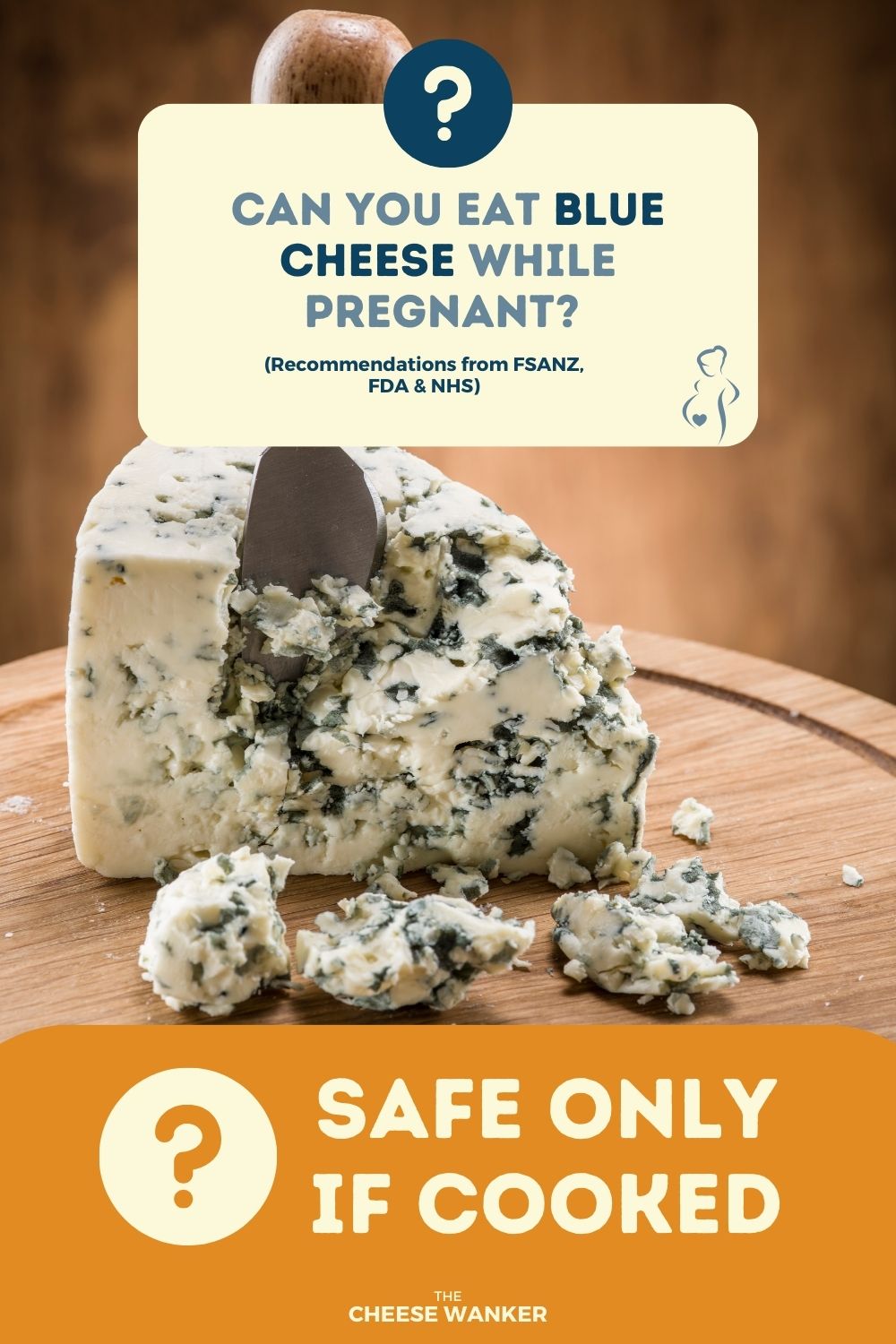
References
All the advice relating to what cheeses you can eat during pregnancy in this article is based on the recommendations by health authorities in Australia, the UK and the USA. If you are unsure about what you can or cannot eat, please consult your doctor.
Australia – FSANZ
United Kingdom – NHS
United Sates of America – FDA
